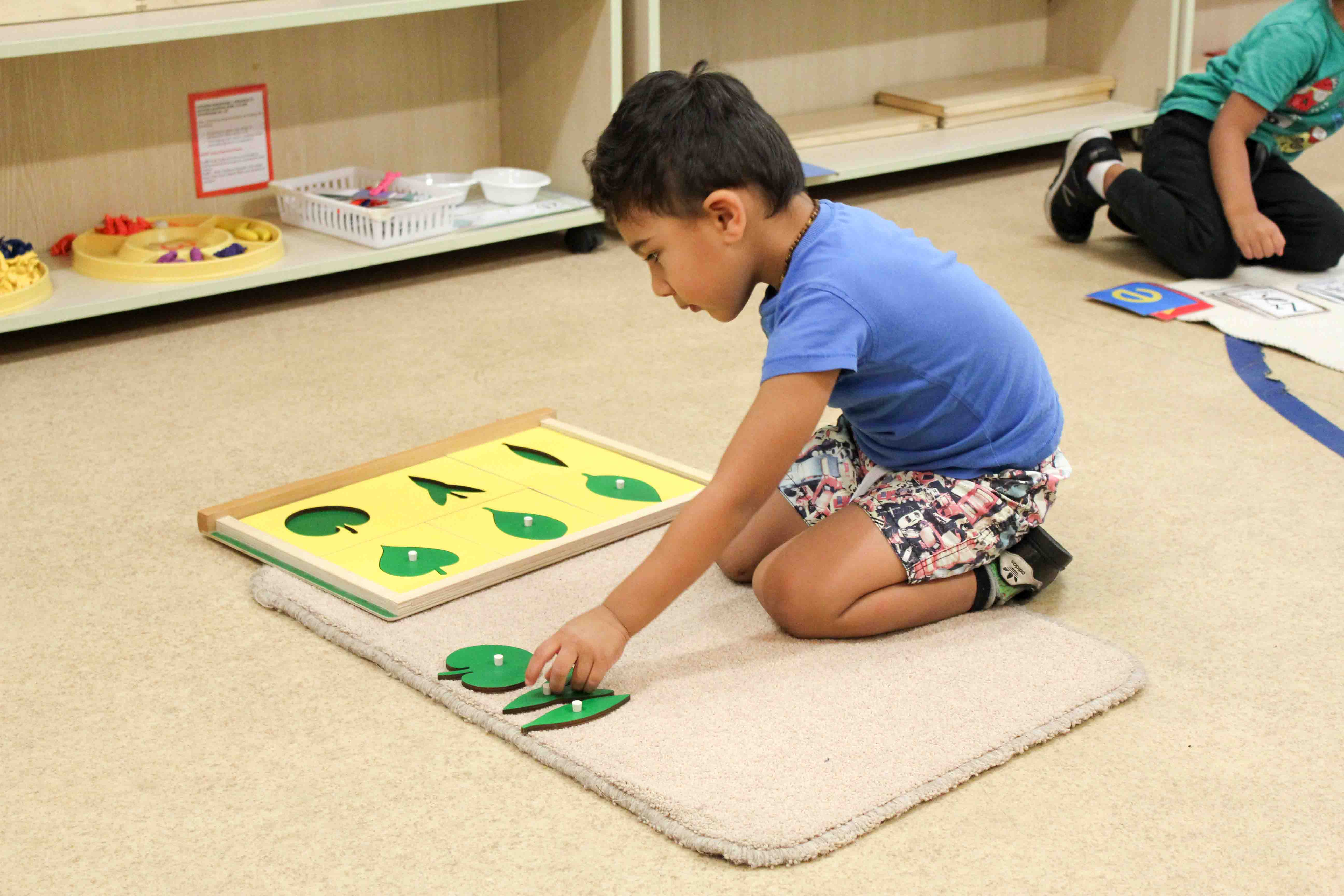
introduction to the world of botany. It is also one of the first Montessori materials children work with that allows them to explore the world through a scientific lens.
The Botany Cabinet comprises a wooden cabinet which houses three drawers filled with different leaf forms. Two of the drawers have six leaf insets each, and the third draw have two leaf shapes, and four wooden squares.
The leaf insets are coloured dark green, with a knob in the centre allowing children to pick up each piece of the material with ease. These are kept in yellow squares that have a cut out of each leaf shape.
Purpose
The direct purpose of the Botany Cabinet is to help children develop the ability to visually discriminate between shapes and objects of different sizes. Students begin working with this material at three years of age, as this is the developmental period when they become familiar with the pincer grip, a key feature of this Montessori learning activity.Although scientific in concept, the Leaf Cabinet is part of the Montessori Sensorial Curriculum. Its primary purpose is to encourage children to refine their senses of sight and touch as they explore this material. The secondary aim of the material is to introduce the child to the language and concepts associated with the studies of botany and science.
Presentation 1: The Shapes
- Invite the child to come work with you and guide them to the Sensorial curriculum area.
- Identify the Botany Cabinet and bring the first tray with six leaf insets to a table, inviting the child to sit on your non-dominant side.
- Choose three contrasting leaf shapes. Remove each by using a pincer grip to grasp the knob and place them on the table in front of you.
- Pick up your first chosen shape with your non dominant hand. Using your fore finger, or a short stick, trace the whole leaf outline, rotating the shape as little as possible.
- Repeat this process for the following two leaves.
- Invite the child to have a turn, ensuring they follow the shape tracing with their eyes, and guiding them if necessary.
- Ask the child to replace the remaining shapes into their insets, challenging them to identify matching shapes.
- Pack away the tray, returning it to the Botany Cabinet.
Presentation 2: The Cards
Children can begin to work with the leaf cards once they are grasping the language of the activity and can correctly work the previouspresentation to completion.
- Invite the child to come work with you and guide them to the Sensorial curriculum area.
- Identify the Botany Cabinet and bring the first tray with six leaf insets and matching cards to a table, inviting the child to sit on your non-dominant side.
- Choose three contrasting leaf cards which show the shapes in solid colours. Place they face up in front of you.
- Slowly select the matching leaf inset and place it on top of the card, showing the child how it matches the leaf cards.
- Repeat this process for the following two leaves.
- Replace the leaf insets, and Invite the child to have a turn, guiding them as necessary.
- Ask the child to replace the left shapes into their insets, challenging them to identify matching shapes.
- Pack away the tray, returning it to the Botany Cabinet.